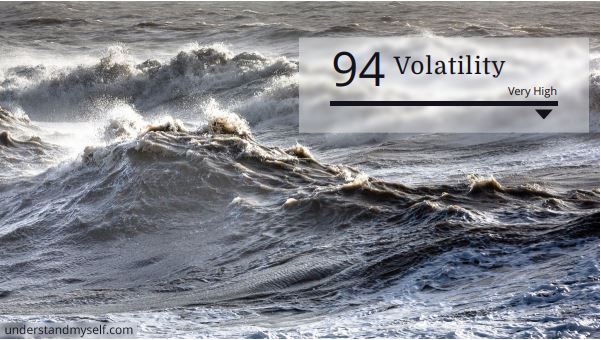Volatility: Very High
Volatility is an aspect of neuroticism. The other aspect of neuroticism is withdrawal.
Your score puts you at the 94th percentile for volatility. If you were one of 100 people in a room, you would be higher in volatility than 94 and lower in volatility than 5.
Individuals with very high volatility tend to externalise negative emotions. Their mood varies significantly. They can be very irritable, reacting quite strongly to disappointment, frustration, pain and the threat of social isolation.
They can lash out with Anger or hostility and are very easily annoyed. They will likely act out or verbally express their frustration, disappointment and irritability. They can be easily stirred up and upset and, once angry or irritated, take a comparatively long time to calm down. They may be argumentative and can lose their composure.
Volatile people tend to get upset if something wrong does happen, while people high in withdrawal (the other aspect of neuroticism) tend to be concerned that something terrible might happen. Technically, volatility has been associated with brain activity that regulates fight, flight or freeze, making people who are high in this aspect hypervigilant for threats in the immediate environment and actively working to avoid or illuminate them.

